Here its my script to read stores QTY depending on ITEM SID, I need to group all records which are related to same ITEM SID to be merged together in one line, find below example images for result and expected results.
SELECT DISTINCT
i.SBS_NO,
to_char(i.ITEM_SID) as ITEMSID,
i.ALU ,
a.LOT_NUMBER ,
a.LOT_NAME,
a.LOT_NOTE,
a.EXPIRY_DATE,
a.ACTIVE ,
--s.STORE_NO,
--s.QTY,
DECODE(S.STORE_NO,1,S.QTY,'0') STR1QTY,
DECODE(S.STORE_NO,2,S.QTY,'0') STR2QTY,
DECODE(S.STORE_NO,3,S.QTY,'0') STR3QTY,
DECODE(S.STORE_NO,4,S.QTY,'0') STR4QTY,
DECODE(S.STORE_NO,5,S.QTY,'0') STR5QTY,
DECODE(S.STORE_NO,6,S.QTY,'0') STR6QTY,
DECODE(S.STORE_NO,7,S.QTY,'0') STR7QTY,
DECODE(S.STORE_NO,0,S.QTY,'0') STR0QTY,
DECODE(S.STORE_NO,99,S.QTY,'0') WHQTY,
i.DESCRIPTION2,
i.DESCRIPTION3,
i.DESCRIPTION4,
i.DCS_CODE,
i.ATTR,
i.SIZ,
i.FST_RCVD_DATE,
i.UDF1_DATE,
i.QTY_PER_CASE,
i.ACTIVE,
i.MARKDOWN_PRICE,
i.UDF2_VALUE as ITEM_STATUS
from inventory_v i
inner join LOT a
on i.ITEM_SID = a.ITEM_SID
inner join LOT_QTY s
on a.ITEM_SID=s.ITEM_SID
where i.sbs_no=1
and i.ITEM_SID=a.ITEM_SID
--and i. ALU='358N690175'
and a.ITEM_SID=s.ITEM_SID
and i.SBS_NO=a.SBS_NO
and a.SBS_NO=s.SBS_NO
and s.STORE_No in (0,1,2,3,4,5,6,7,99)
and a.ACTIVE=1
and i.ACTIVE=1
GROUP BY
i.SBS_NO,
i.ITEM_SID,
i.ALU ,
a.LOT_NUMBER ,
a.LOT_NAME,
a.LOT_NOTE,
a.EXPIRY_DATE,
a.ACTIVE ,
s.STORE_NO,
s.QTY,
i.DESCRIPTION2,
i.DESCRIPTION3,
i.DESCRIPTION4,
i.DCS_CODE,
i.ATTR,
i.SIZ,
i.FST_RCVD_DATE,
i.UDF1_DATE,
i.QTY_PER_CASE,
i.ACTIVE,
i.MARKDOWN_PRICE,
i.UDF2_VALUE
;
THANKS
[expected result]

